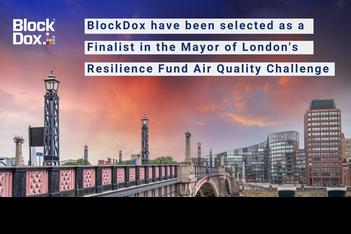Indoor air quality has become a prime concern for the modern business, giving rise to a need for indoor air quality monitoring solutions that can deliver evaluations on factors such as temperature, humidity and carbon dioxide as the bare minimum. This need for healthier awareness and understanding of the air we are breathing has spurred the exigency for such intelligence. As expected, with the current pandemic being battled, the market for these devices has grown exponentially.
Certainly, only what is measured can then be managed, so being able to collect, monitor and then evaluate all the crucial factors of air quality, is critical to establishing an environment that is safe and healthy. Having access to a device which can deliver this monitoring effectively is considerably significant in providing a business with the ability to act upon and manage its evaluations.
It is estimated that 24,000 people die prematurely each year in the UK from exposure to air pollution, of which 9,500 are Londoners. Undoubtedly, poor air quality correlates with ill health, especially for those who have greater sensitivity to their environments such as children, older adults, or people with heart disease, asthma, and other respiratory ailments. Indeed, air quality is not the same everywhere. Pollution is prone to building up in isolated pockets, and local sources, for example in close proximity to industry, or a busy road can add to the overall poor air quality in a building. As a result of different areas differing on their levels of air quality at different times, it is important for what is occurring to be monitored.
As well as having direct effects on public health, habitats and biodiversity, the pollutants that are often found in big cities and buildings, can combine in the atmosphere to form ozone, a harmful air pollutant (and potent greenhouse gas) which can be transported great distances by weather systems. Dust can also be a planning concern, for example, because of the effect on local amenity.
An IoT-integrated, smart built environment leverages the data it monitors to augment user experience in buildings, and, as a result, presents added-values to its users. For instance, the operational costs of buildings could be reduced drastically by learning from dynamic occupants’ end-use patterns. Positive outcomes could effortlessly counterbalance the implementation costs induced by IoT deployment in the short-term. With a growing awareness of health and well-being in buildings, IoT investment provides a further advantage to assess the quality of indoor built environments and supply long-term impactful applications. For instance, improving the health of workplaces could initiate a reduction in sick leaves and attrition.
Indoor air quality monitoring is the first line of defence against the harmful effects of outdoor air pollution. It is the first step to ensuring health, safety, well-being, and environmental awareness. It addresses specific problem sources, enables educated decisions to be made, and inspires practical solutions.
Contact us to find out how BlockDox can help you: sales@blockdox.com














